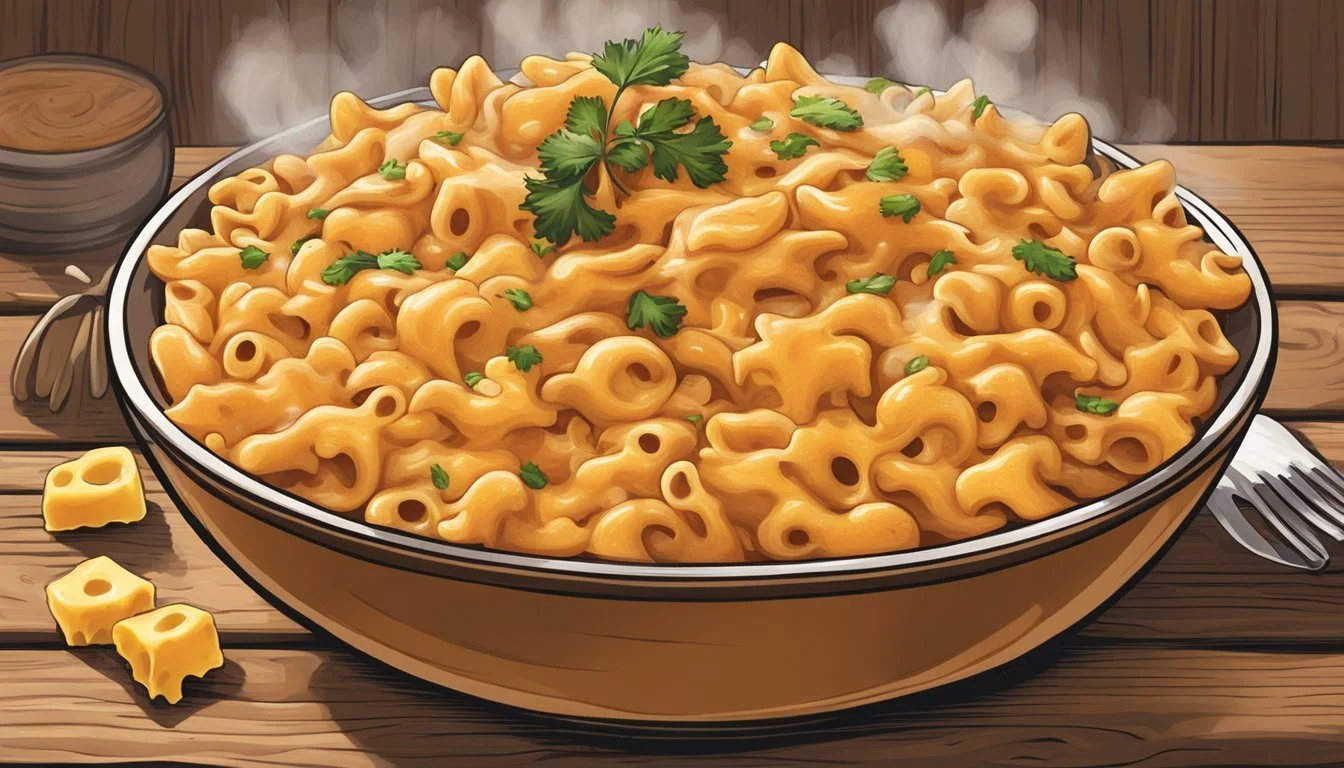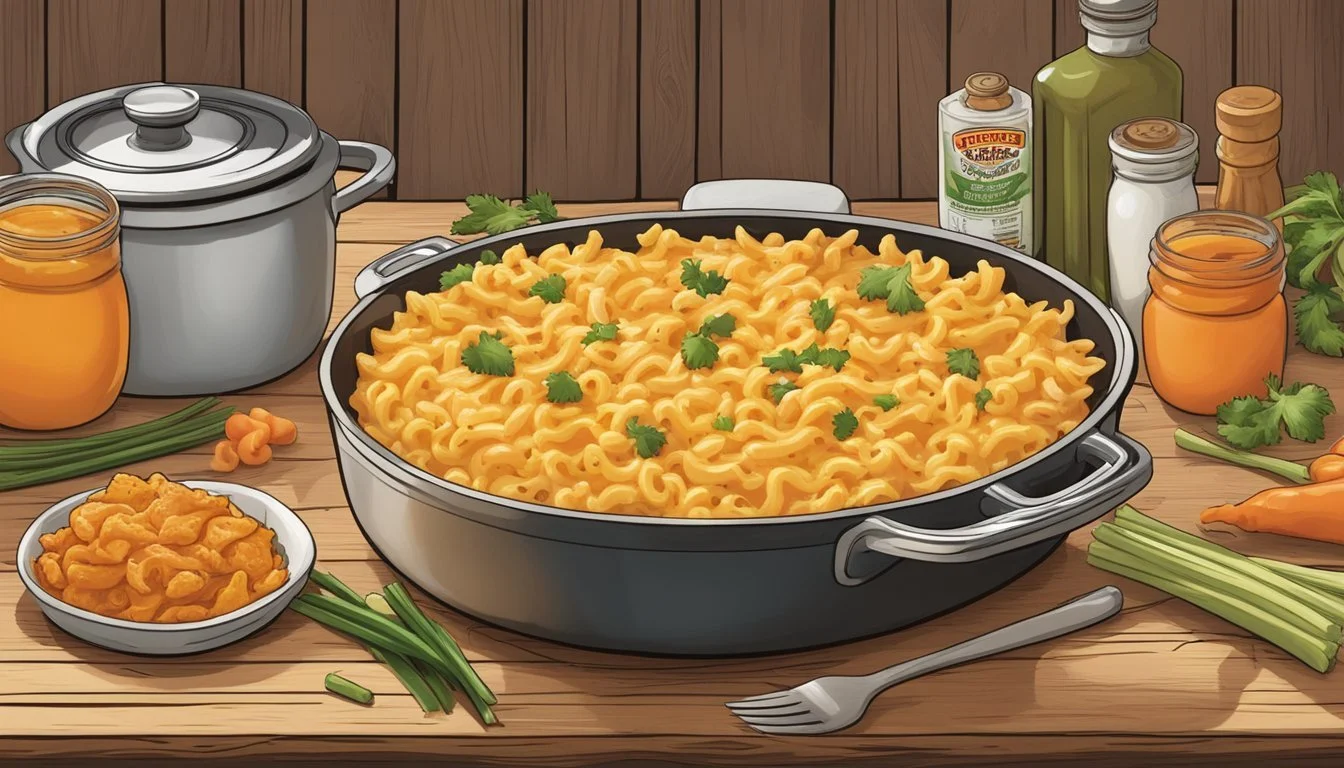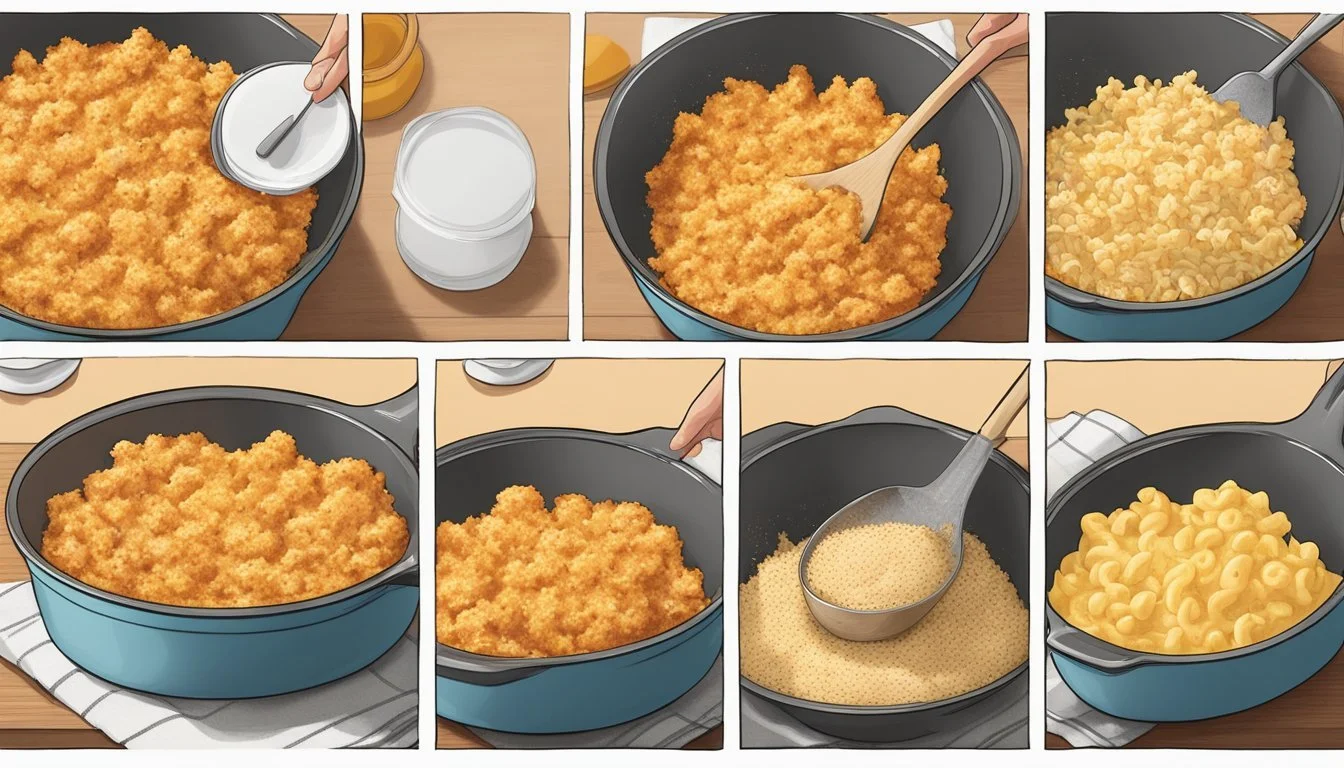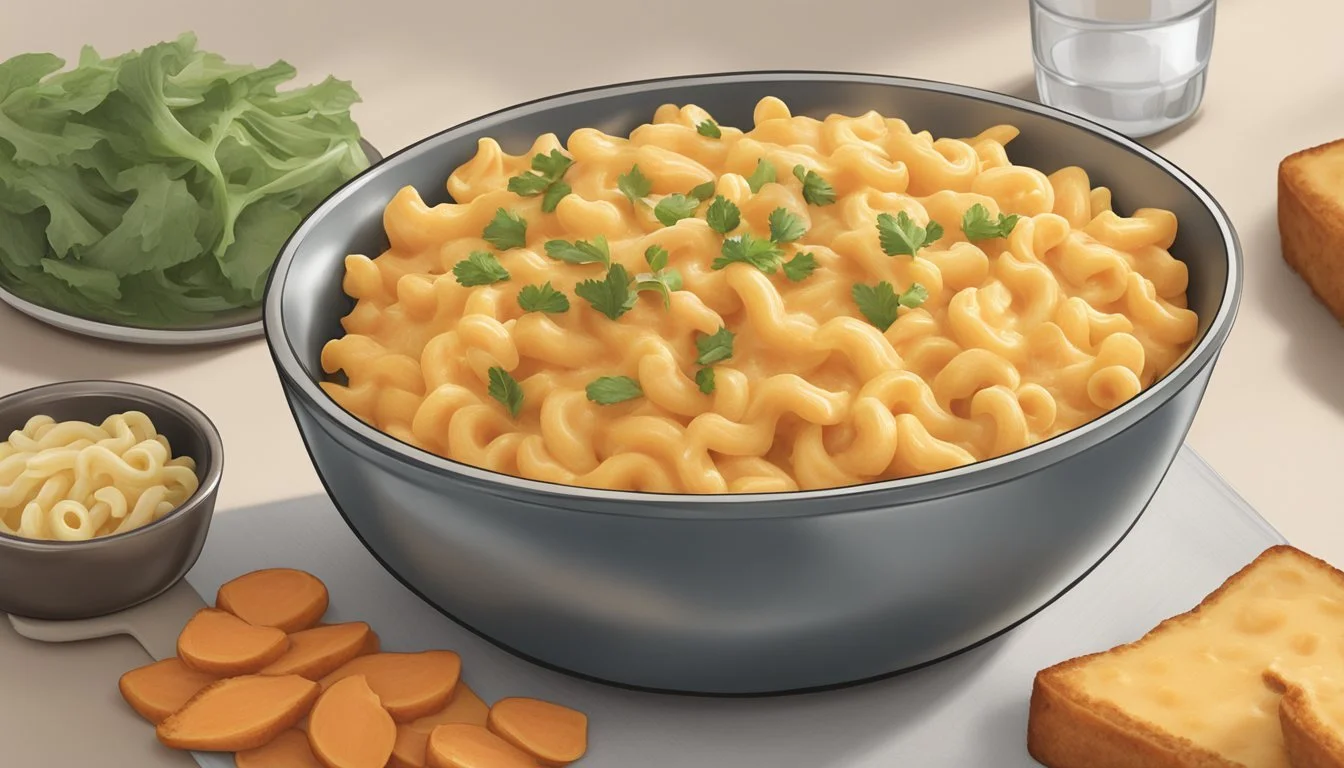How Long Does Buffalo Chicken Macaroni and Cheese Last?
Shelf Life and Storage Tips
Buffalo Chicken Mac and Cheese is a beloved comfort food that combines the creamy goodness of macaroni and cheese with the spicy kick of buffalo chicken. Whether you're making it as a main course for dinner or preparing it for a gathering, understanding how long it lasts is crucial for both safety and taste. Properly stored, Buffalo Chicken Mac and Cheese can last in the refrigerator for up to 3-5 days.
For those looking to extend its shelf life, freezing is an option. When frozen, this dish can maintain its quality for up to two months. Simply portion it out into airtight containers before freezing to ensure it stays fresh. Reheating should be done gently, either in the oven or on the stovetop, to maintain its creamy texture.
By following these storage methods, you can enjoy your Buffalo Chicken Mac and Cheese for several days without compromising on flavor or safety. Knowing how to store leftovers properly not only reduces waste but also allows you to relish this delicious main course whenever the craving strikes.
Overview of Buffalo Chicken Mac and Cheese
Buffalo chicken mac and cheese combines the rich, creamy flavors of traditional macaroni and cheese with the spicy kick of buffalo chicken.
The basic ingredients include macaroni, cheddar cheese, cream cheese, and buffalo sauce. Various recipes add blue cheese, pepper jack, or sharp cheddar for added flavor.
In this dish, a cheese sauce is made by melting cheeses like cheddar and cream cheese, and then incorporating buffalo sauce and seasoning such as mustard powder, onion powder, salt, and pepper. Pre-cooked macaroni is then mixed into the sauce.
Rotisserie chicken or other cooked chicken is typically shredded and folded into the cheesy pasta mixture. This combination ensures every bite provides a balance of creamy cheese and spicy chicken.
Some recipes incorporate a crust made from panko bread crumbs mixed with melted butter and seasonings. This adds a crunchy texture to the top layer, enhancing the overall eating experience.
Buffalo chicken mac and cheese can be baked, grilled, or even smoked, depending on the desired flavor profile. Baking usually takes about 15-20 minutes at 400°F (200°C) until it's bubbly and golden.
The dish offers a versatile base that can be adjusted for spiciness. Adding extra buffalo sauce or including hot sauce can increase the heat, while using a mix of mild and sharp cheeses can provide depth to the flavor.
Overall, this dish stands out for its creamy texture, spicy kick, and rich flavor profile, making it a favorite comfort food for many.
Essential Ingredients
Creating a delicious Buffalo Chicken Mac and Cheese requires attention to the types of cheese, variety of chicken, pasta selection, and choice of hot sauce. Each element contributes uniquely to the dish's flavor and texture.
Types of Cheese
A good cheese blend is essential for rich, creamy mac and cheese. Sharp cheddar cheese provides a robust flavor foundation. Mozzarella adds a stringy texture, creating that perfect cheese pull. Cream cheese ensures a smooth consistency, while pepper jack cheese introduces a subtle heat that complements the buffalo sauce. Some recipes suggest blue cheese crumbles, which offer a distinctive tang and depth. Use these cheeses in combination to achieve a balanced, complex flavor profile.
Chicken Varieties
Rotisserie chicken is often preferred for its convenience and flavor. It adds a savory depth without requiring additional cooking. If using fresh chicken, consider seasoning and cooking it thoroughly before adding it to the dish. Shredded or cubed chicken works well, ensuring each bite includes a good chicken-to-pasta ratio. For those who prefer more heat, marinate the chicken in buffalo sauce before cooking. This ensures the spice is infused throughout the meat.
Selecting Your Pasta
Elbow macaroni is the classic choice, offering the perfect size and shape to hold onto the sauce. Its small, curved tubes are ideal for trapping the cheesy mixture. Other pasta shapes like cavatappi, penne, or rotini can also be used for added texture and variety. Each type of pasta provides a different mouthfeel, so consider the overall texture you aim to achieve. Cooking the pasta al dente is crucial to prevent it from becoming mushy after baking.
Variations in Hot Sauce
Buffalo sauce is the key to the characteristic flavor of this dish. It generally consists of a blend of hot sauce, melted butter, and vinegar. Choosing the right hot sauce can impact the heat level and flavor complexity. Options range from mild to extra hot, with variations in vinegary tang or smoky notes. Some recipes may also incorporate additional hot sauce types for more depth - hot sauce or Sriracha can provide a different kick. Adjust the amount based on your heat preference, keeping in mind that the cheese will slightly mellow the spice.
Preparation Techniques
The techniques for preparing Buffalo Chicken Mac and Cheese involve several key steps: cooking the pasta, making the cheese sauce, mixing in the buffalo chicken, and layering the mixture for baking.
Cooking the Pasta
Macaroni should be cooked in a large pot of salted water. Bring water to a rolling boil on the stove. Once the water is boiling, add the macaroni and cook until it’s al dente, typically around 7-8 minutes. It’s essential not to overcook the pasta, as it will continue to cook in the oven later. Drain the pasta well and set it aside, making sure it doesn’t stick together by tossing it with a bit of oil if necessary.
Preparing the Cheese Sauce
Begin by making a roux. Melt unsalted butter in a skillet over medium heat, and whisk in all-purpose flour until smooth. Continue to cook for about 1-2 minutes. Gradually add whole milk, whisking continuously to prevent any lumps. Once the sauce thickens, remove it from the heat and stir in shredded cheese until it melts completely. Add buffalo sauce, stirring until the sauce is well combined. Season with salt, mustard powder, and other desired spices for extra flavor.
Mixing Buffalo Chicken
For the chicken, use shredded rotisserie chicken for convenience. Add the shredded chicken into the prepared cheese sauce, making sure it is well-coated. This ensures that each bite has a consistent flavor. For an extra kick, sprinkle in some additional buffalo sauce. Mix thoroughly to ensure an even distribution of chicken and sauce. This mixture is now ready to be combined with the cooked macaroni.
Layering the Bake
Preheat the oven to 400 degrees Fahrenheit (200°C). Grease a baking dish to prevent sticking. Combine the pasta with the chicken and cheese sauce mixture, ensuring everything is evenly coated. Pour the mixture into the greased baking dish. Top it with a generous layer of shredded cheese and, if desired, extra buffalo sauce. Bake uncovered for 15-20 minutes, or until the top is bubbly and golden-brown. Let it cool slightly before serving to allow the flavors to meld.
Baking and Serving
Properly baking and serving Buffalo Chicken Macaroni and Cheese ensure that the dish is both flavorful and appealing. Key points include mastering oven temperatures and baking times, presenting the dish in an appetizing manner, and pairing it with suitable accompaniments.
Oven Temperatures and Times
Baking the Buffalo Chicken Macaroni and Cheese at the right temperature is crucial. Typically, preheat the oven to 350 degrees Fahrenheit (175 degrees Celsius). Allow the cheese to melt and become bubbly around the edges by baking for 18-20 minutes.
If opting for a higher temperature, set the oven to 400 degrees Fahrenheit (200 degrees Celsius) and bake the dish for around 15-20 minutes for a golden, crispy top. Adjust times based on the specifics of your oven and preferred texture.
Presentation Tips
Presenting Buffalo Chicken Macaroni and Cheese well elevates the dining experience. Consider using a cast-iron skillet or a ceramic baking dish for a rustic, homey feel. Sprinkle extra cheese or breadcrumbs on top just before baking for a perfect golden crust.
For an added touch, garnish with chopped parsley or green onions after baking. Serve directly from the baking dish, ensuring each portion includes a generous amount of chicken and mac. This not only enhances the dish’s appeal but also ensures balanced flavor in each bite.
Suggested Accompaniments
Pairing the Buffalo Chicken Macaroni and Cheese with the right side dishes can balance the meal. Fresh side salads with crisp greens and a light vinaigrette provide a refreshing contrast to the rich, cheesy main dish.
Vegetable sticks (carrots, celery) alongside a blue cheese or ranch dip complement the buffalo flavor effectively. For added texture, serve with garlic bread or buttery rolls. Beverages like lemonade or a light beer can also enhance the overall dining experience.
Storage Information
Proper storage of Buffalo Chicken Macaroni and Cheese is essential for maintaining its quality and ensuring food safety. Below are detailed guidelines for refrigeration, freezing, and determining spoilage.
Refrigeration
Store leftovers in an airtight container. The fridge temperature should be at or below 40°F (4°C) to keep the dish fresh.
Buffalo Chicken Macaroni and Cheese typically lasts 3-4 days in the fridge. Ensure it's fully cooled before storing to prevent condensation and bacterial growth. Divide into smaller portions if necessary for quicker cooling.
When reheating, bring it to an internal temperature of at least 165°F (74°C). This ensures any potentially harmful bacteria are eliminated. It's best eaten within this timeframe for optimal taste and texture.
Freezing Tips
Freezing is an excellent option if you plan to make it ahead or have abundant leftovers. Let the Buffalo Chicken Macaroni and Cheese cool completely before transferring to a freezer-safe container. Leave about an inch of space at the top, as liquids expand when frozen.
For best results, freeze in single-serving portions. This not only speeds up the freezing process but also makes reheating more convenient. It can be stored in the freezer for up to 2-3 months. Label containers with the date to keep track of storage time.
When ready to eat, thaw in the fridge overnight, then reheat to an internal temperature of 165°F (74°C).
Determining Spoilage
Examine appearance, texture, and smell to check for spoilage. Spoiled Buffalo Chicken Macaroni and Cheese may develop a sour smell, slimy texture, or discoloration.
Check for visible mold, especially around the edges. If it smells off or looks questionable, it's safer to discard it.
Additionally, adhere to the recommended refrigeration and freezing times. If in doubt, err on the side of caution and do not consume the dish. Food safety should always be a priority.
Reheating Guidelines
To enjoy Buffalo Chicken Macaroni and Cheese again, proper reheating is essential to maintain its flavor and creaminess. Here are effective methods to reheat this delicious dish:
Preheat the oven to 350°F.
Transfer the mac and cheese to an oven-safe dish.
Add 1 tablespoon of milk or cream for every cup of mac and cheese to keep it creamy.
Cover it with aluminum foil to prevent drying.
Bake for 20-25 minutes or until heated through.
Place a serving in a microwave-safe bowl.
Stir in some milk or cream—approximately 1 tablespoon per cup.
Cover the bowl with a microwave-safe plate or a damp paper towel to retain moisture.
Heat on 50% power for 1 minute, then stir and repeat until fully heated, usually 2-3 minutes.
Baking Again:
For baked mac and cheese, the oven method is preferred to keep the top crispy:
Preheat the oven to 350°F.
Follow the same steps as the oven method above.
Avoid broiling to not over-crisp the topping.
Whether using the oven or microwave, Buffalo Chicken Macaroni and Cheese should be reheated to an internal temperature of 165°F. This ensures safety and optimal taste.
Nutritional Information
Buffalo Chicken Mac and Cheese is a rich and flavorful dish, but it is important to be aware of its nutritional content. This includes understanding the caloric content and dietary considerations for those monitoring their diet.
Caloric Content
Buffalo Chicken Mac and Cheese is notable for its high-calorie content. A typical serving can range from 400 to 600 calories, depending on the recipe and portion size. The dish is dense due to the carbohydrate content from the macaroni, protein from the chicken, and fat from cheese and milk.
For those seeking precise information, here is an estimated breakdown for a 1-cup (approximately 200g) serving:
Calories: 450
Protein: 25g
Carbohydrates: 40g
Fat: 20g
These values can fluctuate based on ingredients and preparation methods.
Dietary Considerations
For protein intake, this dish provides a substantial amount, beneficial for muscle maintenance and overall health. A typical serving can offer around 25 grams of protein. It is an excellent option for those needing higher protein, such as athletes or individuals on high-protein diets.
The fat content, primarily from cheese and milk, adds to the dish's richness but can also contribute to high cholesterol levels if consumed excessively. Opt for lower-fat dairy alternatives or reduced-fat cheese to make it healthier.
People with dietary restrictions, such as lactose intolerance, should consider lactose-free products or nutritional yeast as cheese alternatives. For those watching calories or managing healthy eating habits, portion control is crucial when enjoying Buffalo Chicken Mac and Cheese.
By making slight modifications, such as adding vegetables or using whole-grain pasta, the dish can become more balanced while retaining its delicious flavor.
Possible Variations and Substitutes
Buffalo Chicken Mac and Cheese can be customized in various ways to suit dietary preferences and spice tolerances. Here are some specific substitutions and adjustments to make this dish fit your needs.
Vegetarian Options
For a meat-free version, replace the chicken with vegetables like broccoli, cauliflower, or bell peppers. These veggies add both nutritional value and a satisfying crunch. Mushrooms or tofu can also serve as good substitutes, offering a different but equally delicious texture.
Cheese choices can be varied too. Using a blend of cheddar, cream cheese, and parmesan adds a rich and creamy texture. Opt for vegetable broth instead of chicken broth to keep all ingredients vegetarian-friendly.
Adjusting Spice Levels
Modifying the spice level is simple and allows for broader appeal. Use milder buffalo sauce or reduce the quantity to ensure a less spicy experience. Conversely, for those who love heat, adding extra hot sauce or incorporating hot peppers into the dish can enhance its fiery nature.
In the case of children or those sensitive to spice, a combination of cream cheese and mild buffalo sauce can create a smoother, less intense flavor.
Alternative Pasta Choices
Different pasta shapes can change the texture and appearance of the dish. Elbow macaroni is traditional, but shapes like rotini, shells, or cavatappi can hold cheese sauce better, adding variety. For a healthier touch, consider whole wheat pasta or gluten-free options.
Experiment with grain types, such as quinoa pasta or chickpea pasta, which provide more protein and a different texture. Consistency is key, so ensure pasta is cooked al dente to avoid sogginess during baking.
These variations and substitutes allow you to tailor Buffalo Chicken Mac and Cheese to your specific tastes and dietary requirements while maintaining its signature creamy, spicy flavor.
Additional Tips and Tricks
For those looking to elevate their buffalo chicken mac and cheese, focusing on the creaminess, cheese sauce consistency, and crunchy topping can make a significant difference. Below are specific tips and techniques to enhance your dish.
Enhancing Creaminess
To make the mac and cheese extra creamy, consider adding sour cream or ranch dressing. Stirring in a cup of either after combining the pasta with the cheese sauce can add a tangy flavor and creamier texture.
Use whole milk or heavy cream instead of low-fat milk to create a richer sauce. Pre-shredded cheeses often have anti-caking agents, which can result in a less smooth sauce. Opt for freshly shredded cheese for better melting and consistency.
Cheese Sauce Consistency
Achieving the right cheese sauce consistency is crucial. Start by making a roux with butter and flour, which thickens the sauce as it cooks. Gradually add milk while continually whisking to avoid lumps.
To prevent the sauce from becoming grainy, add the cheese slowly over low heat. For a smoother sauce, include cheeses that melt well, like cheddar and monterey jack. Avoid using too much pre-shredded cheese, as it may not incorporate as smoothly due to added starches.
Crunchy Topping Techniques
A crunchy topping can add a delightful contrast to the creamy mac and cheese. Panko topping or seasoned bread crumbs are ideal choices. Mix them with melted butter before sprinkling over the pasta for an even crunchier result.
For an added flavor boost, include blue cheese crumbles into the topping mixture. Bake the dish until the topping is golden brown and the edges are bubbly. This indicates that the topping has reached its optimal crispiness.
By focusing on these key aspects—creaminess, sauce consistency, and topping techniques—anyone can create a remarkable buffalo chicken mac and cheese dish that stands out.










